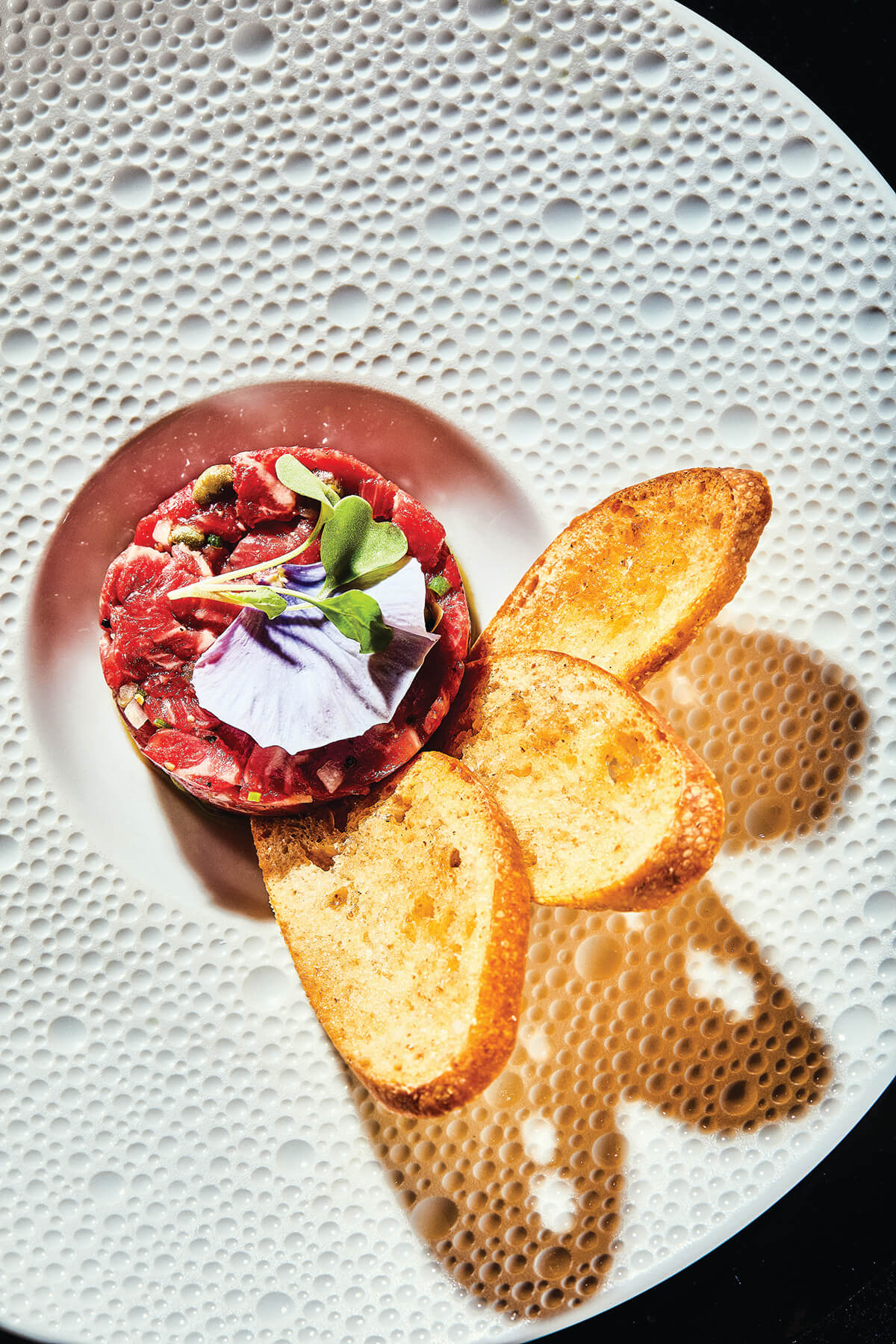Food & Drink
Steak Tartare is All the Rage on Area Menus
It seems the raw beef dish has become the new “it” appetizer.

From sushi to ceviche to crudo to carpaccio, raw (aka tartare) dishes, have long been a prominent part of various cultures and gained popularity at Baltimore restaurants. But lately, every area menu seems to have its take on steak tartare. And this raw beef dish, with a creamy consistency and assertive seasoning, has become the new “It” appetizer, with various versions, whether chopped, ground, or practically puréed, on offer at Duck Duck Goose, Marie Louise Bistro, Monarque, The Milton Inn, and JBGB’s.
The original dish was called steak à l’Americaine, and a variety served with tartar sauce on the side was called à la tartare. Eventually, the sauce was eliminated, but the name stuck.
“The fun of it always was that the French would give you all of the hand-chopped beef and there would be a raw egg yolk sitting on top,” says Cindy Wolf, co-owner and executive chef of Charleston in Harbor East. “And then you would have the garnishes around and you’d make your own. In the U.S., over time, people started mixing it all together and doing their own versions.”
Wolf’s version of the dish—hand-chopped beef tenderloin, chopped shallots, chives, lime, jalapeño, and EVOO, served with French bread toast points—is at once familiar and brand new, with a brightness that comes courtesy of the jalapeño.
“It sells so well,” says Wolf. “It’s one of the most popular things on the menu.”
The steak tartare trend has really taken off thanks to the prevalence of high-quality beef in the U.S., says Wolf, who sources her product from Kansas-based Creekstone Farms.
“We have excellent quality beef in our country,” says Wolf, whose father worked in the restaurant industry and whose grandfather and great-grandfather were butchers. “People recognize that—and that there’s nothing wrong with eating it raw.”